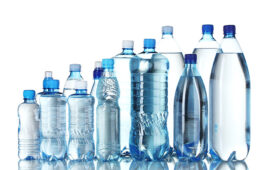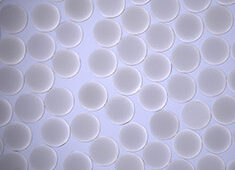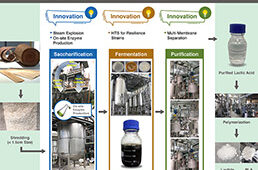Coal-burning plants like this produce millions of tons of flyash that could be used to strengthen U.S. roads and bridges, saving billions of dollars. Credit: iStock |
Coating
concrete destined to rebuild America’s crumbling bridges and roadways
with some of the millions of tons of ash left over from burning coal
could extend the life of those structures by decades, saving billions of
dollars of taxpayer money, scientists reported this week at the 241st
National Meeting & Exposition of the American Chemical Society. They
described a new coating material for concrete made from flyash that is
hundreds of times more durable than existing coatings and costs only
half as much.
Study
leader Charles Carraher, Ph.D., explained that the more than 450
coal-burning electric power plants in the United States produce about
130 million tons of “flyash” each year. Before air pollution laws, those
fine particles of soot and dust flew up smokestacks and into the air.
Power plants now collect the ash.
“Flyash
poses enormous waste disposal problems,” Carraher said. “Some of it
does get recycled and reused. But almost 70 percent winds up in
landfills every year, where space is increasingly scarce and expensive.
Our research indicates that this waste could become a valuable resource
as a shield-like coating to keep concrete from deteriorating and
crumbling as it ages.”
Carraher,
who is with Florida Atlantic University, said that the new material can
be used to coat and protect from corrosion steel reinforcing bar, or
“rebar,” rods embedded in concrete to reinforce and strengthen it. The
coating also is suitable for repairing damaged concrete. This is part of
a joint project between industry (Felix Achille, of Blue World Crete)
and academia (Charles E. Carraher, Ph.D., Dept. of Chemistry and
Biochemistry; Madasamy Arockiasamy, Ph.D., Dept. of Civil Engineering;
and Perambur Neelakantaswamy, Ph.D., Dept. Electrical Engineering and
Computer Science).
Laboratory
tests have shown that the coating has excellent strength and durability
when exposed to heat, cold, rain, and other simulated environmental
conditions harsher than any that would occur in the real world, Carraher
said. The coating protected concrete from deterioration, for instance,
that involved exposure to the acids in air pollution that were 100,000
times more concentrated than typical outdoor levels environment. Coated
concrete remained strong and intact for more than a year of observation,
while ordinary concrete often began to crumble within days, he said.
Carraher
cited U.S. Environmental Protection Agency estimates for the cost for
repair, restoration, and replacement of concrete in domestic wastewater
and drinking water systems. They range up to $1.3 trillion, and by some
accounts must be completed by 2020 to avoid environmental and public
health crisis problems. Crumbling concrete roads and bridges will
require hundreds of billions more.
Use
of the coating could extend the lifespan of those structures, with
enormous savings, while helping to solve the flyash disposal problem,
Carraher noted.





